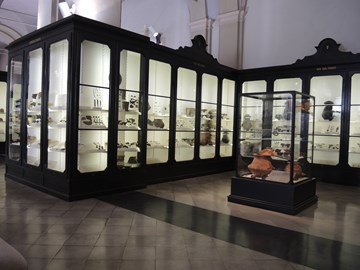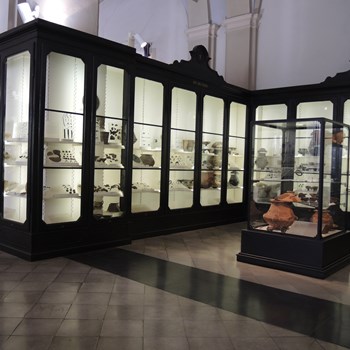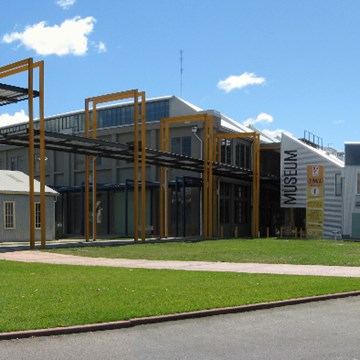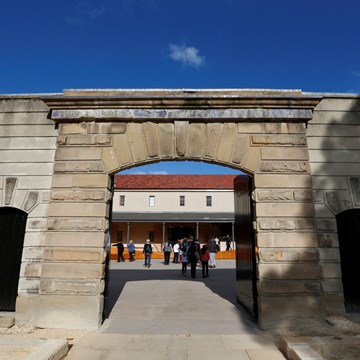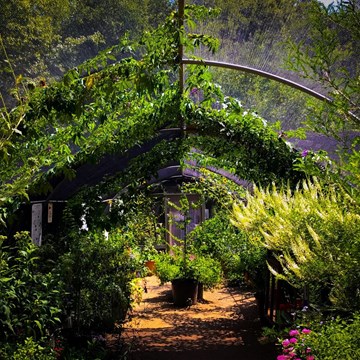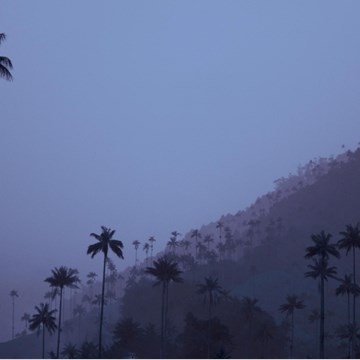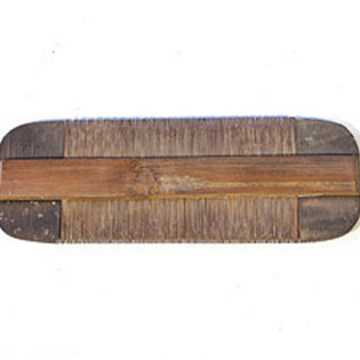300.000 years of history
The archaeological museum documents the historical development of both the city and its outlying territory from Palaeolithic to Medieval times. The museum’s core collection comprises findings from the pile-dwelling settlements known as terramare, typical of the Po plain during the Bronze Age, and significant Neolithic finds chiefly linked to the excavations and research carried out by the Modena-born archaeologist Fernando Malavolti. Within the Etruscan display, the rich funeral objects found in the necropolis of Galassina at Castelvetro stand out. There are numerous finds coming from Mutina, the Roman city celebrated by Cicero, foremost among them is the set of a refined triclinium benches from a late first-century BC domus.
ETHNOLOGICAL COLLECTIONSThe ethnological section, created between 1875 and the first decades of the 20
th century, is composed of materials from various geographical regions that in many cases bear witness to cultures that have disappeared or are nearly extinct. The current organization of the collections respects the original 19
th century subdivision by geographical area: New Guinea, Peru, South America, Africa and Asia.
ROMAN LAPIDARY
The Roman section of the museum is enriched by the monuments of the Mutina necropolises, which began coming to light during the post World War II period, on display on the ground floor of the Palazzo dei Musei in the Roman Lapidary of the Civic Museums. The monuments come from discoveries made in areas beyond the perimeter of the Roman city that were occupied by monumental necropolises. Particularly relevant are the pieces related to the burial areas that extended along the Via Emilia east of the city, such as the monumental funerary altar of Vetilia Egloge, datable to the 1
st century A.D. The altar (discovered in 2007), which is made of stacked blocks of calcareous stone that stand over four metres tall, is strikingly imposing.
From the same necropolis come several other pieces: the extraordinary frieze portraying sea monsters and a procession of divinities (mid-1
st century A.D.) that was originally part of an aedicule monument; the altar of the centurion Clodio, with funerary enclosure; the fragment depicting the prow of a ship that possibly belonged to a fleet commander of the Augustan era; and the funerary stele of the tonsor Lucius Rubrius Stabilio and the cloth dyer Caius Purpurarius Nicephor.
The significance of the body of material on exhibit attests to the wealth achieved by Mutina, and through the messages passed on in epigraphs enriches our vast heritage of knowledge about the social fabric of the city.
300.000 years of history The archaeological museum documents the historical development of both the city and its outlying territory from Palaeolithic to Medieval times. The museum’s core collection comprises findings from the pile-dwelling settlements known as terramare , typical of the Po plain during the Bronze Age, and significant Neolithic finds chiefly linked to the excavations and research carried out by the Modena-born archaeologist Fernando Malavolti. Within the Etruscan display,...
Read more